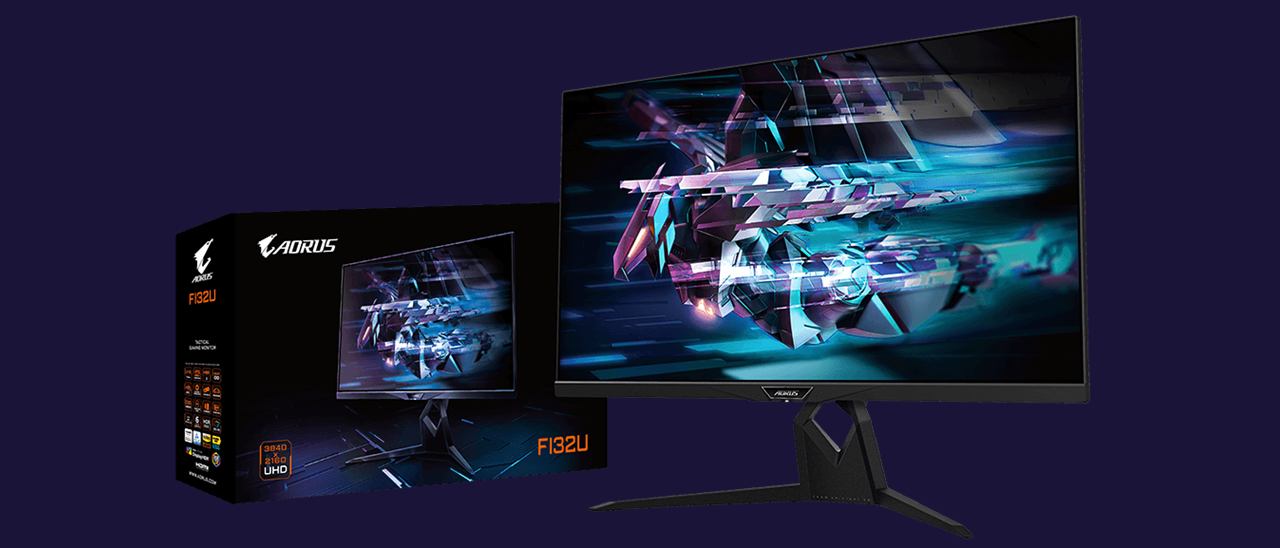Why you can trust Tom's Hardware
A 32-inch 4K monitor such as the FI23U is somewhat unique.Our recent reviews of 4K monitors include mainly 27 and 43-inch models. For comparison against the Aorus Gigabyte FI23U, we’ve rounded up the Asus ROG Swift PG32UQX, a super monitor if there ever was one, plus LG’s 27GN950, Asus’ ROG Strix XG27UQ, the Aorus FV43U and Viotek’s GFI27QXA.
Pixel Response and Input Lag
Click here to read up on our pixel response and input lag testing procedures.


If you want the speediest possible monitor, no 4K screens will fill the bill. But if the highest pixel count is a bigger priority, the FI32U still delivers quick performance that matches the best of the genre. All of the screens here are 144 Hz and draw a frame in 7-8ms. The FI32U falls into the faster category. Though a 1ms difference may sound small, it makes a visual difference in motion resolution. Coupled with an excellent overdrive, the FI32U is one of the smoothest 144 Hz screens available of any resolution.
The FI32U’s overall control lag of 26ms is also among the best. Only the two 27-inch screens here beat that score and only by 1ms. No one will detect 1ms of lag, and it should be noted that there are plenty of 180 and 240 Hz monitors that are only marginally quicker. Gamers looking for the ideal blend of resolution and speed will be happy playing on the FI32U.
Viewing Angles
Several of the newest IPS panels have raised the bar for off-axis image quality, and the FI32U is one of them. At 45 degrees to the sides, light reduces by less than 10%, while color shifts slightly to red and green. From the top, light falls by around 30%, and detail is reduced but not washed out completely. This is excellent performance from a monitor that can easily be shared by two people playing the same game.
Screen Uniformity
To learn how we measure screen uniformity, click here.
Our FI32U sample showed excellent uniformity. This is a tough test for big panels as they have greater potential for bleed and glow issues. We saw no flaws in any of the field patterns, however. Color was perfectly uniform from edge to edge, and blacks were true in all parts of the screen.
Get Tom's Hardware's best news and in-depth reviews, straight to your inbox.
Current page: Response, Input Lag, Viewing Angles and Uniformity
Prev Page Features and Specifications Next Page Brightness and Contrast
Christian Eberle is a Contributing Editor for Tom's Hardware US. He's a veteran reviewer of A/V equipment, specializing in monitors. Christian began his obsession with tech when he built his first PC in 1991, a 286 running DOS 3.0 at a blazing 12MHz. In 2006, he undertook training from the Imaging Science Foundation in video calibration and testing and thus started a passion for precise imaging that persists to this day. He is also a professional musician with a degree from the New England Conservatory as a classical bassoonist which he used to good effect as a performer with the West Point Army Band from 1987 to 2013. He enjoys watching movies and listening to high-end audio in his custom-built home theater and can be seen riding trails near his home on a race-ready ICE VTX recumbent trike. Christian enjoys the endless summer in Florida where he lives with his wife and Chihuahua and plays with orchestras around the state.
-
kaalus When are you going to get into your heads that higher resolution is not to fit more content on the screen. It is to have the normal-sized content displayed in much better quality.Reply


